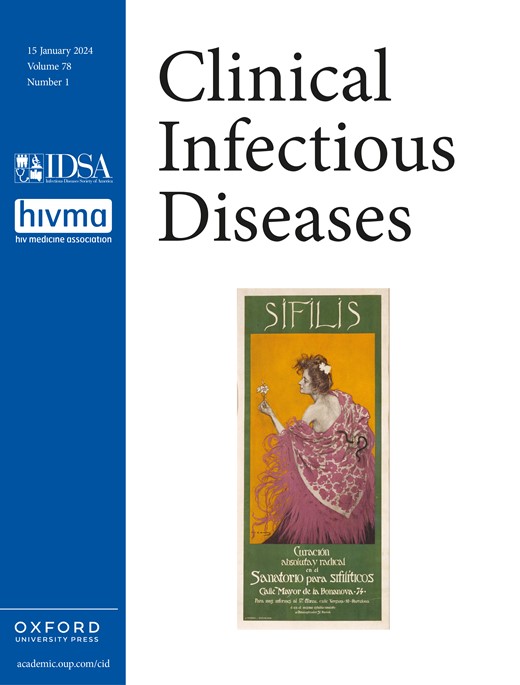Incidence of statin initiation among people with and without HIV in the US: a prospective observational study
IF 8.2
1区 医学
Q1 IMMUNOLOGY
引用次数: 0
Abstract
Background To reduce atherosclerotic cardiovascular disease (ASCVD) among US people living with HIV (PLWH), it is critical to assess shortfalls in statin initiation. We aimed to describe patterns in clinically-indicated statin initiation among demographically similar people with, or at increased vulnerability to, HIV. Methods Using data from the Multicenter AIDS Cohort Study and Women’s Interagency HIV Study, we followed 842 men and 852 women with an indication for statin use based on 2013 American College of Cardiology/American Heart Association guidelines for statin initiation between January 2014–March 2020. We estimated two-year incidence of statin initiation stratified by demographic, clinical, and behavioral characteristics and compared estimates using incidence differences. Results Within two years of clinical indication for statin therapy, 20% of participants reported statin use. Initiation of statin therapy did not differ significantly by HIV status. However, initiation was lower among Black versus non-Black persons, especially among men (14.0% versus 22.3%; Difference: -8.3%; 95% CI: -13.8%, -2.8%). Compared to initiation among persons indicated based only on ≥7.5% 10-year predicted ASCVD risk (Incidence, men: 14.2%; women: 15.2%), initiation was higher among those with existing ASCVD (Incidence, men: 32.9%; women: 22.0%) or diabetes (Incidence, men: 26.4%; women: 24.5%). Initiation was lower among current versus non-current smokers and higher among those with comorbidities such as obesity. Conclusions Guideline-driven statin initiation was low, with large inequities by race. With indications for statin use expanding for PLWH, redressing barriers to guideline implementation will be crucial to achieve improved outcomes through uptake of these evidence-based therapies.他汀类药物在美国HIV感染者和非HIV感染者中的起始发生率:一项前瞻性观察研究
背景 为了减少美国艾滋病病毒感染者(PLWH)中动脉粥样硬化性心血管疾病(ASCVD)的发病率,评估他汀类药物使用的不足至关重要。我们的目的是描述人口统计学上相似的 HIV 感染者或更易感染 HIV 的人群中临床指示他汀类药物的使用模式。方法 我们利用多中心艾滋病队列研究和妇女机构间艾滋病研究的数据,根据 2013 年美国心脏病学会/美国心脏协会他汀类药物使用指南,对 2014 年 1 月至 2020 年 3 月期间有他汀类药物使用指征的 842 名男性和 852 名女性进行了随访。我们根据人口统计学、临床和行为特征对他汀类药物的两年使用率进行了分层估算,并利用发生率差异对估算结果进行了比较。结果 在有他汀类药物治疗临床指征的两年内,20% 的参与者报告使用了他汀类药物。他汀类药物治疗的开始率并不因艾滋病病毒感染状况而有显著差异。但是,黑人与非黑人相比,特别是男性(14.0% 与 22.3%;差异:-8.3%;95% CI:-13.8%, -2.8%),开始他汀治疗的比例较低。与仅根据 10 年 ASCVD 预测风险≥7.5% 的人群(发病率,男性:14.2%;女性:15.2%)进行初始化相比,现有 ASCVD(发病率,男性:32.9%;女性:22.0%)或糖尿病(发病率,男性:26.4%;女性:24.5%)患者的初始化率更高。当前吸烟者与非当前吸烟者的他汀类药物起始率较低,肥胖等合并症患者的他汀类药物起始率较高。结论 由指南驱动的他汀类药物使用率较低,不同种族之间存在很大的不平等。随着他汀类药物在 PLWH 中的适应症不断扩大,解决指南实施过程中遇到的障碍对于通过采用这些循证疗法来改善治疗效果至关重要。
本文章由计算机程序翻译,如有差异,请以英文原文为准。
求助全文
约1分钟内获得全文
求助全文
来源期刊

Clinical Infectious Diseases
医学-传染病学
CiteScore
25.00
自引率
2.50%
发文量
900
审稿时长
3 months
期刊介绍:
Clinical Infectious Diseases (CID) is dedicated to publishing original research, reviews, guidelines, and perspectives with the potential to reshape clinical practice, providing clinicians with valuable insights for patient care. CID comprehensively addresses the clinical presentation, diagnosis, treatment, and prevention of a wide spectrum of infectious diseases. The journal places a high priority on the assessment of current and innovative treatments, microbiology, immunology, and policies, ensuring relevance to patient care in its commitment to advancing the field of infectious diseases.
 求助内容:
求助内容: 应助结果提醒方式:
应助结果提醒方式:


